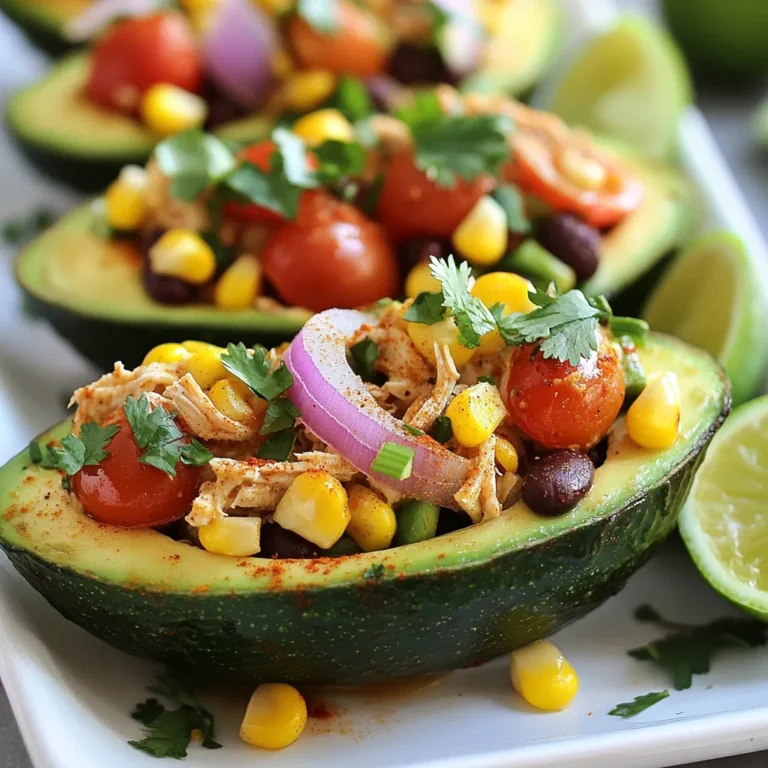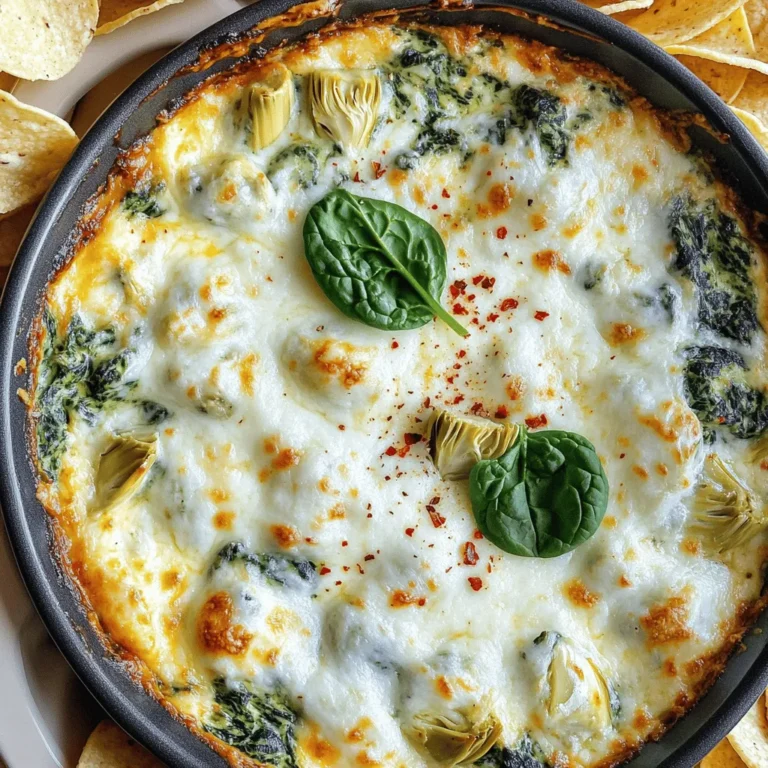Creamy Roasted Garlic Hummus Easy and Flavorful Dip

Are you ready to elevate your snack game? This Creamy Roasted Garlic Hummus is the perfect dip. With its rich flavor and easy steps, you’ll impress everyone at your next gathering. Plus, I’ll share tips on how to customize it to suit any taste! Packed with nutrients, this recipe not only satisfies your cravings but also supports your health. Let’s dive in and create this delicious, creamy delight together!
Ingredients
Complete Ingredient List
To make creamy roasted garlic hummus, gather these ingredients:
- 1 can (15 oz) chickpeas, drained and rinsed
- 1/4 cup tahini
- 1/4 cup fresh lemon juice (about 1 lemon)
- 4 cloves roasted garlic
- 3 tablespoons olive oil
- 1/2 teaspoon ground cumin
- 1/4 teaspoon smoked paprika
- Salt to taste
- Water (as needed for desired consistency)
Optional Garnishes
You can add these for extra flavor and looks:
- Fresh parsley for garnish
- Olive oil for drizzle
Nutritional Information Overview
This hummus packs a punch of nutrients. Here’s a quick overview:
- Chickpeas offer protein and fiber.
- Tahini adds healthy fats and calcium.
- Olive oil brings heart-healthy benefits.
- Lemon juice gives vitamin C and bright flavor.
One serving (about 2 tablespoons) has around 70 calories. Enjoy this tasty dip while knowing it’s good for you!
Step-by-Step Instructions
How to Roast Garlic
Roasting garlic is simple and fun. Start by preheating your oven to 400°F (200°C). Take a whole bulb of garlic and cut off the top. This helps the garlic cook well. Drizzle a bit of olive oil on the cut side. Wrap the bulb in aluminum foil. Roast it in the oven for 30-35 minutes. The garlic will feel soft and smell sweet. Let it cool a bit before handling. Squeeze the roasted garlic out of the skins, and it’s ready to use.
Blending the Hummus
Now it’s time to blend our hummus. Grab your food processor. Add the drained chickpeas, tahini, fresh lemon juice, and the roasted garlic cloves. Pour in the olive oil, ground cumin, smoked paprika, and a pinch of salt. Turn on the food processor and pulse the mixture. Keep blending until it comes together and looks creamy. You want it smooth and rich.
Tips for Adjusting Consistency
Sometimes, hummus can be too thick. To fix this, add water slowly. Pour in one tablespoon at a time while blending. Check the texture and keep adding until it’s as creamy as you like. If you need more flavor, taste it! Add more salt or lemon juice if you want. This way, your hummus will be just right.
Tips & Tricks
Perfecting the Flavor
To make your creamy roasted garlic hummus shine, focus on quality. Use fresh garlic for roasting. The sweet, rich flavor of roasted garlic makes a big difference. Don’t skip the smoked paprika; it adds depth to the taste. Adjust salt and lemon juice to suit your palate. Taste as you go to get it just right.
Serving Suggestions
Serve this hummus with warm pita bread for a classic touch. Fresh veggies like carrots, cucumbers, and bell peppers add crunch. For a fun twist, pair it with olives and pickles. You can also spread it on sandwiches or wraps for added flavor. Hummus makes a great dip for parties, too!
Storing Leftover Hummus
If you have leftover hummus, store it in an airtight container. It keeps well in the fridge for about a week. To maintain freshness, drizzle a bit of olive oil on top before sealing. If it thickens, add a little water and blend again for a creamy texture.
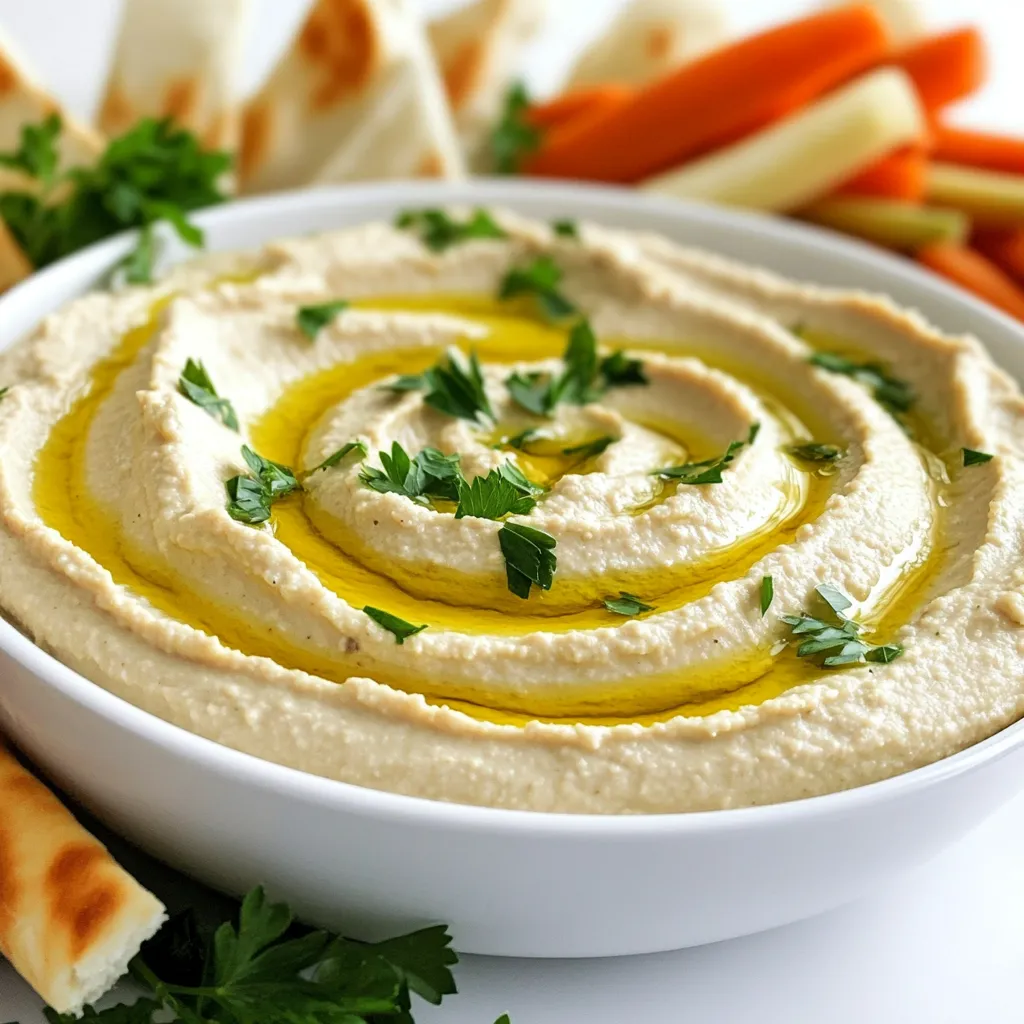
Variations
Spicy Roasted Garlic Hummus
To make a spicy version of this hummus, add some heat. You can mix in 1-2 teaspoons of cayenne pepper or red pepper flakes. Blend this with the chickpeas, tahini, lemon juice, and roasted garlic. This adds a nice kick. Adjust the spice level based on your taste. I love how the heat blends with the creamy texture.
Herb-Infused Hummus
For a fresh twist, add herbs. Basil, cilantro, or dill work great. Just chop a handful of your chosen herb and mix it in. Blend it well to combine the flavors. This variation brings a vibrant taste and aroma to the dish. You can even use a mix of your favorite herbs for a unique flavor.
Nut-Free Alternatives
If you want to skip nuts, don’t worry. You can replace tahini with sunflower seed butter. This keeps the creaminess while being nut-free. You can also use more olive oil to help with texture. Just blend it in until you reach your desired smoothness. This option is perfect for those with nut allergies.
Health Benefits
Nutritional Value of Hummus
Hummus is a tasty dip that packs a lot of nutrients. One serving of hummus gives you protein, fiber, and healthy fats. These nutrients help keep your body strong and full of energy. The chickpeas and tahini in hummus are excellent sources of vitamins and minerals. They also add a creamy texture, making it a perfect spread or dip.
Benefits of Chickpeas
Chickpeas are the star of hummus. They are high in protein, which helps build muscles. They also contain fiber, which aids in digestion. Eating fiber-rich foods like chickpeas can help you feel full longer. This can be helpful if you want to maintain a healthy weight. Chickpeas also have vitamins like B6 and folate, which are good for your heart and brain.
Advantages of Using Olive Oil
Olive oil is a healthy fat that adds flavor to hummus. It contains antioxidants that can help protect your body from damage. Using olive oil in hummus can also improve heart health. It helps to lower bad cholesterol levels. When you drizzle olive oil on your hummus, it not only tastes great, but it also boosts the health benefits. Plus, it adds a nice shine to your dish!
FAQs
Can I use raw garlic instead of roasted garlic?
Yes, you can use raw garlic, but it changes the taste. Raw garlic is sharper and can make the hummus bitter. Roasted garlic gives a sweet, rich flavor. This makes the hummus creamy and smooth. If you prefer a stronger taste, start with one clove and taste as you go.
How long does homemade hummus last in the fridge?
Homemade hummus lasts about five to seven days in the fridge. Store it in an airtight container to keep it fresh. Always check for any change in smell or color. If it looks good, it’s likely still good to eat. For best taste, enjoy it within the first few days.
What can I use if I don’t have tahini?
If you lack tahini, you have options. You can use peanut butter, sunflower seed butter, or Greek yogurt. These substitutes add creaminess and flavor. You can also skip it altogether, but the hummus will be different. Adjust the other ingredients to maintain a balanced taste.
This blog post covered how to make hummus from scratch. We looked at key ingredients, step-by-step instructions, and tips for the best flavor. I shared variations to keep it exciting and highlighted the many health benefits of hummus.
In summary, making your own hummus is easy and rewarding. You can customize it to fit your taste and enjoy its nutrition. With the right ingredients and techniques, you’ll create a delicious dip that’s perfect for any occasion. Enjoy your hummus journey!
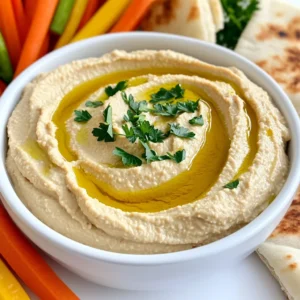

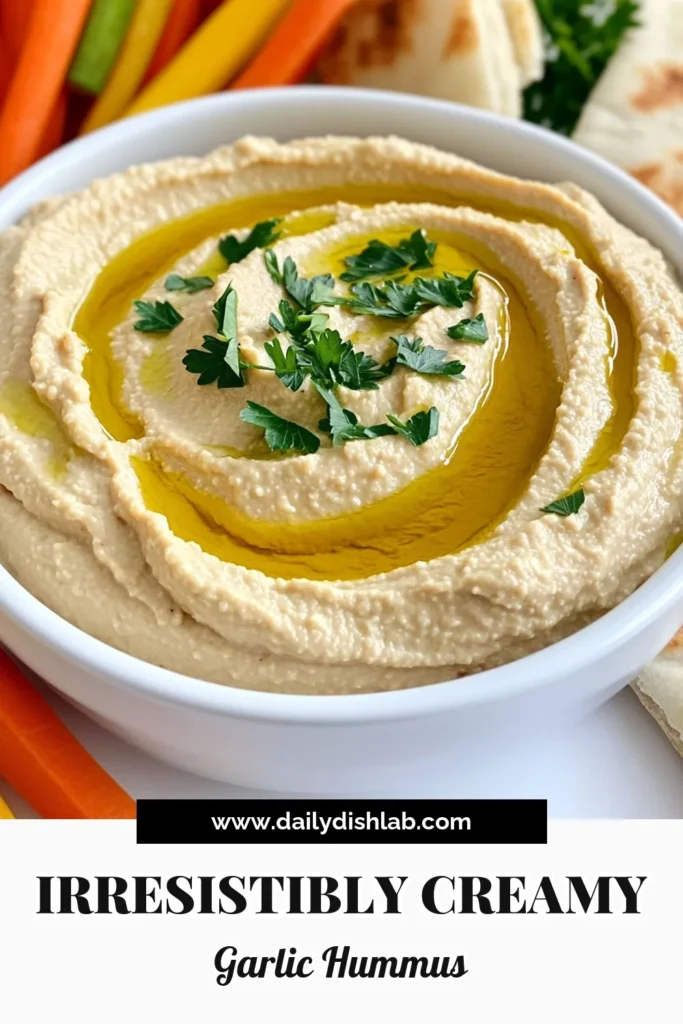
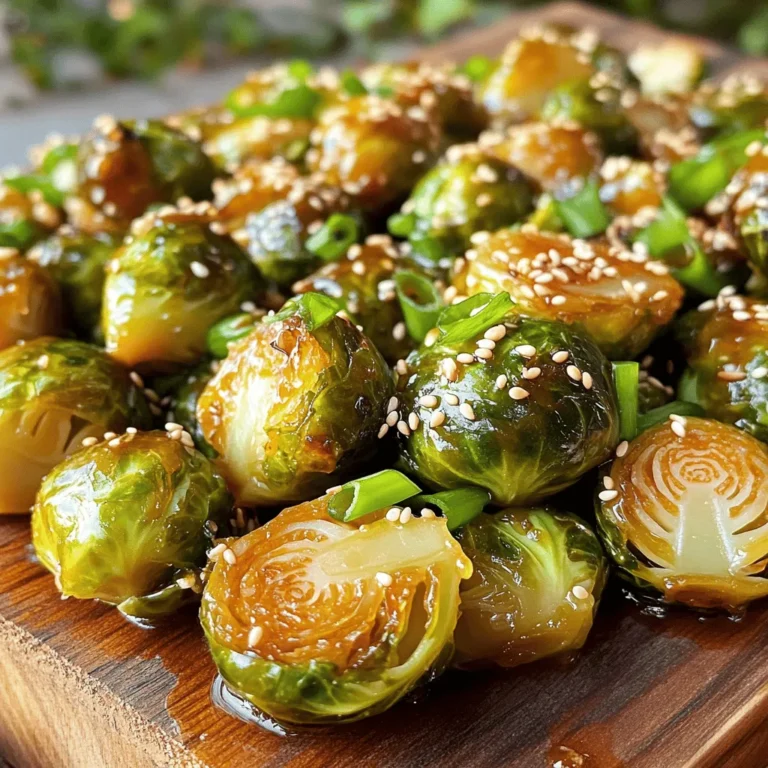

![- 6 large eggs - 1 ripe avocado, peeled and pitted - 2 tablespoons lime juice - 1 teaspoon lime zest - 1 teaspoon Dijon mustard - Salt and pepper to taste - 1 tablespoon fresh cilantro, chopped (for garnish) - A pinch of chili powder (optional, for a hint of spice) These ingredients make your Avocado Lime Deviled Eggs fresh and tasty. The eggs provide a great base. The creamy avocado adds richness. Lime juice and zest give a bright flavor. Dijon mustard adds a gentle tang. Adjust salt and pepper to your taste. The cilantro adds a fresh touch. If you like spice, sprinkle in some chili powder. You can find the Full Recipe for step-by-step guidance. Enjoy making these delightful bites! To boil eggs perfectly, start with cold water. Place your eggs in a pot and fill it with water. Make sure the water covers the eggs by about an inch. Heat the pot over medium-high heat until it boils. When it starts to boil, cover the pot and turn off the heat. Let the eggs sit for 10-12 minutes. This method keeps them tender and easy to peel. Timing is key, as undercooked eggs will be runny, while overcooked eggs will turn green. Next, prepare the avocado filling. Halve the ripe avocado and take out the pit. Scoop the flesh into a mixing bowl. Mash it until it is smooth and creamy. To avoid browning, add lime juice right away. The acid in lime helps keep the green color. Mix in the egg yolks, lime zest, and Dijon mustard for flavor. The right texture is creamy but not too runny. Now it's time to fill the egg whites. After peeling and halving the boiled eggs, remove the yolks. Add the yolks to the avocado mixture and stir well. Use a piping bag for neat filling. This allows for even distribution. If you don’t have a piping bag, a spoon works too. Just make sure the filling is heaped nicely in each half. This step makes them look beautiful and appetizing. For a complete recipe, check out the [Full Recipe]. To make your avocado lime deviled eggs shine, you need to balance the lime and avocado perfectly. The lime adds a bright taste, while the avocado brings creaminess. I suggest starting with two tablespoons of lime juice. You can add more if you prefer a stronger lime flavor. Adjusting seasonings is key. After mixing the filling, taste it. If it needs more zing, add a pinch of salt or a dash of pepper. If you like a kick, consider a sprinkle of chili powder. These small tweaks can elevate your dish. Garnishing enhances the look of your deviled eggs. Fresh cilantro adds a lovely green touch. A sprinkle of chili powder not only adds color but also hints at spice. When serving, arrange the eggs on a bright platter. This will catch the eye at any party. You can also place them in an egg carton for a fun and unique display. One common mistake is overcooking the eggs. This can make the yolks dry and crumbly. Follow the cooking time closely for perfect results. Another mistake is not mixing the filling well. Ensure all ingredients blend smoothly. This makes a creamy, cohesive filling that tastes great. You want every bite to be delicious. {{image_2}} For a kick, add jalapeños or hot sauce. This spice brings a nice heat to the creamy filling. Start with a small amount of diced jalapeños. You can always add more if you like it spicier. A few drops of your favorite hot sauce can also do the trick. Mix it into the avocado filling for heat in every bite. You can make your deviled eggs even better by adding veggies. Chopped bell peppers, diced tomatoes, or shredded carrots can give a nice crunch. You can also use fresh herbs like dill or basil. They add unique flavors and brighten up your eggs. Just mix them into the filling for an extra layer of taste. If you need to make this dish vegan, swap the eggs for chickpeas. Mash cooked chickpeas with the avocado and lime. This keeps the creamy texture and adds protein. For a low-carb option, skip the eggs altogether. Use avocado, lime, and your choice of herbs. These modifications keep the flavors fresh and tasty. Use the Full Recipe to try these variations and discover your favorite twist on this classic dish! To keep your Avocado Lime Deviled Eggs fresh, store them in the fridge. Place them in an airtight container. This helps prevent the eggs from drying out or absorbing other smells. If you don’t have a container, cover the eggs tightly with plastic wrap. Aim to eat them within two days for the best taste and texture. Can you freeze Avocado Lime Deviled Eggs? No, you should not freeze these deviled eggs. The avocado can change texture when frozen. It may become grainy and lose its creamy flavor. How to properly freeze and thaw Since freezing is not a good option, focus on eating your deviled eggs fresh. If you want to make them ahead, prepare the filling and store it separately. You can fill the egg whites just before serving. How long do they last in the fridge? These eggs will last up to two days in the fridge. After that, they may start to lose their fresh taste. Signs of spoilage Look for changes in color or texture. If the filling turns brown or smells off, it’s best to discard the eggs. Always trust your senses when it comes to food safety. Yes, you can use different types of avocados. Hass avocados are creamy and rich, making them perfect for this recipe. Florida avocados are larger and milder in flavor. They can work too but may change the taste and texture slightly. If you want a rich, smooth filling, go with Hass. If you prefer a lighter flavor, choose Florida avocados. You can use other citrus fruits instead of lime. Lemon juice is a great option and adds a nice tang. Grapefruit juice can also work well if you want a unique twist. Just remember to adjust the amount to your taste. Each citrus fruit brings its own flavor and can change the dish's overall taste. You can make these deviled eggs ahead of time. Prepare the filling and store it in the fridge. Fill the egg whites just before serving to keep them fresh. This method ensures the eggs stay firm and the filling remains vibrant. You can also boil the eggs a day before and store them in the fridge. These deviled eggs pair well with many dishes. They make a great starter for brunch or a party. You can serve them with cocktails like margaritas or mojitos. They also go well with fresh salads or light soups. Feel free to be creative and mix them with your favorite dishes! Yes, you can make these deviled eggs gluten-free. All the ingredients in this recipe are naturally gluten-free. Just ensure that the Dijon mustard you use is also gluten-free. Most brands offer gluten-free options, so check the label to be sure. Enjoy this tasty treat without any worries! In this post, we explored Avocado Lime Deviled Eggs, covering ingredients, tips, and variations. You learned how to boil eggs perfectly, prepare the filling, and assemble the dish. We also discussed storage methods and answers to common questions. Remember, balancing flavors and avoiding overcooking are key. With a few simple tweaks or additions, you can make this dish your own. Enjoy this tasty twist on a classic!](https://dailydishlab.com/wp-content/uploads/2025/07/08a04e97-d91e-4bc2-a0e0-9f1f6250904f-768x768.webp)
